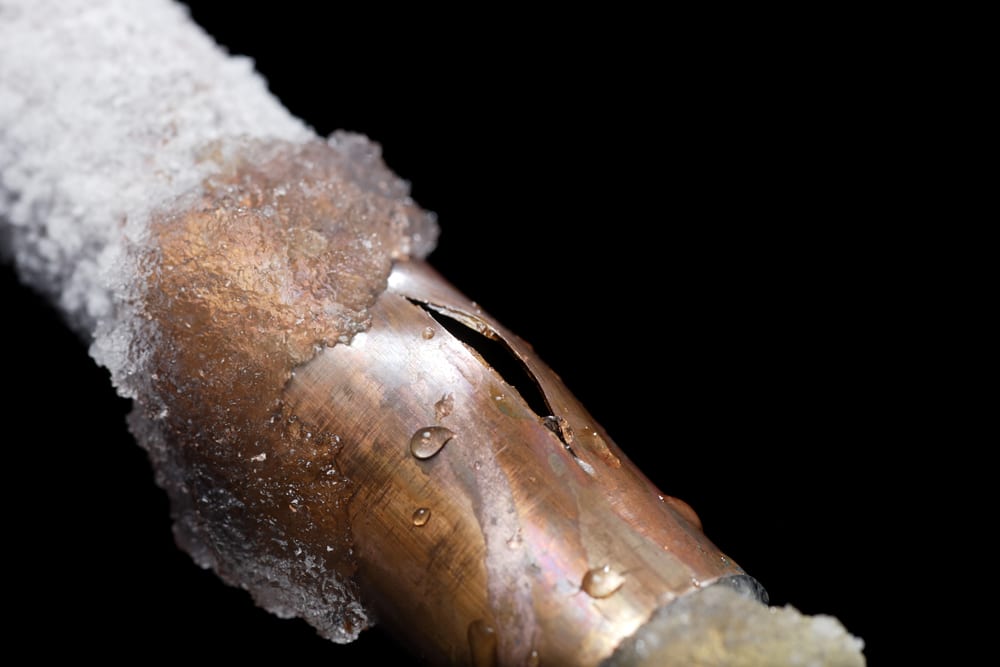The temperature keeps dropping in Anchorage and the lack of snow so far this year is significantly increasing many people’s risk of frozen pipes. Frozen pipes lead to burst pipes, which often result in flooding and water damage. When water damage isn’t treated, it can result in harmful mold problems. So prevention is your best solution and here are some great tips to make sure your pipes don’t cause nasty issues for you this winter.
Exposed pipes in your basement don’t usually pose a problem since they are typically in the same area as your heater and will toasty. Instead, watch out for exposed pipes in unheated areas like crawl spaces, attics, garages, and under kitchen or bathroom cabinets. Both hot and cold water pipes are in danger of freezing and need attention.
Insulate pipes in unheated areas using a “pipe sleeve” or “heat tape.” For moderately cold times, an inexpensive foam pipe insulation is sufficient to prevent freezing. During times of more severe temperatures, it is much effective to use thermostatically controlled heat tape to wrap the pipes, which “turns on” at specific minimum temperatures.
Some simple, practical things can help, like keeping your garage doors closed as much as possible if you have water lines there.
If the mercury is dropping in dramatic fashion, consider opening kitchen and bathroom cabinet doors, which allows warm air from the rest of the house to flow around the pipes. If you are going to leave the doors open while you are home, remember to move any harmful cleaners or items out of the reach of children and pets
Another tried and true method is to leave the water on just a bit and set it at a slow, constant drip. A slightly higher water bill is worth it to avoid the much greater cost of fixing broken pipes, flooding and even water damage.
Turn up the heat! If you have any concerns about exposed pipes in your basement, it is worth it to turn up the heat throughout the house and keep your basement toasty than to deal with broken pipes. You could also put an electric heater near pipes you are concerned about. Again, the higher electric bill may be annoying, but in light of the risk of burst pipes, it is a sound investment.
If you are snowbirding and have left Anchorage, Alaska for sunny Arizona or California, then make sure your house temperature is set at no lower than 55 degrees. It is also a good idea to have friends or family come by and check on your house now and again.


